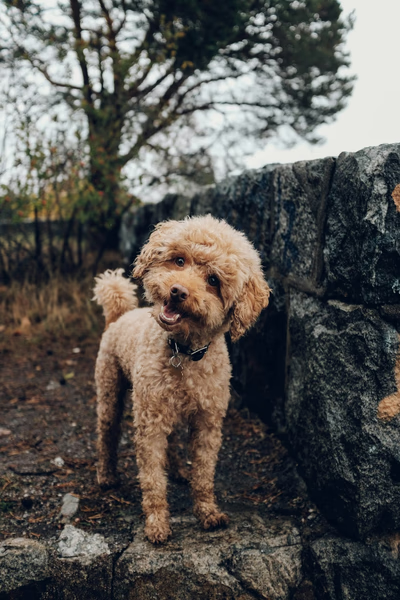What to Do When Your Dog Bites You
What to Do When Your Dog Bites Its Owner
Dog bites are frightening, and when the biter is your own dog the stress can skyrocket. Staying calm and knowing the right steps will help you handle the situation safely. This article explains why dogs bite, what to do immediately after an incident, the owner’s legal responsibilities in the United States, and how to avoid future problems.

Owner Responsibility After a Bite
Immediate obligations
-
Seek medical care and report the incident
Call 911 for severe injuries. Provide the dog’s rabies-vaccination tag number or microchip information. Most jurisdictions require you to notify animal control or the local health department within 24 hours. -
Veterinary observation (quarantine)
A dog that has broken skin must usually undergo a 10-day rabies quarantine—either at home, a vet clinic, or a shelter—so authorities can confirm it remains healthy. -
Notify your insurer
Contact your homeowners, renters, or separate pet-liability insurer within 48–72 hours and submit medical bills plus the veterinarian’s bite report. -
Cooperate with investigators
Produce vaccination certificates and licensing records. Allow property inspections if required. Share proof of obedience training or behavior-modification plans on request.
Legal and financial consequences
- Liability for damages
Courts may apply personal injury compensation standards; serious injuries can exceed $100,000. - Administrative penalties
Besides fines, authorities may mandate permanent muzzling, required training, sterilization, or even removal of the dog. - Criminal liability
If negligence and serious injuries are involved, owners can face legal consequences including potential jail time depending on state laws.
Best practices to reduce legal risk
- Carry liability coverage of $300,000 or more (umbrella policies are inexpensive).
- Keep rabies, core vaccines, parasite prevention, and microchip registration up to date; save every veterinary receipt.
- Maintain written behavior evaluations and obedience certificates.
- At the first sign of aggression, consult a veterinary behaviorist, follow the treatment plan, and document your progress.
Understanding Why Dogs Bite
Factors that may trigger a bite
Dog bites are rarely random acts; they’re often responses to specific situations. Some factors that may trigger a bite include:
- Fear or anxiety – a scared dog may bite defensively.
- Pain or illness – discomfort can make even gentle dogs lash out.
- Territoriality – protecting food, toys, space, or favorite people.
- Rough play – excitement can cross the line into nipping or biting.
Common behaviors in dogs that bite
It’s important to recognize certain behaviors that may indicate potential aggression:
- Growling or excessive barking: Warning signs that shouldn’t be ignored.
- Tense body posture: A dog feeling threatened may show stiffness.
- Fixed stare, pinned-back ears, or excessive drooling: Stress indicators that might precede a bite.
First Steps After a Bite
Stay calm and assess the situation
The first step is to stay calm. Although the situation can be distressing, acting with composure will allow you to think clearly. Assess the severity of the bite:
- Is the wound superficial or deep?
- Is bleeding heavy?
- Is the bite near a joint, tendon, face, or neck?
How to clean and treat the wound
If the bite is minor, follow these steps:
- Wash thoroughly: Use warm water and mild soap for at least 60 seconds.
- Stop bleeding: Apply pressure with gauze or a clean cloth.
- Disinfect: Use an antiseptic to prevent infection.
- Cover: Apply a bandage if necessary.
When to seek medical attention
It’s essential to seek medical attention in these cases:
- Deep puncture wounds, heavy bleeding, or bites to the head, face, hands, or genitals.
- Signs of infection: increasing redness, swelling, warmth, pus, or fever.
- Unknown rabies-vaccination status: you may need rabies post-exposure prophylaxis.
- Tetanus boosters are recommended if you haven’t had one in the past ten years (or five for dirty wounds).
Preventing Future Bites
Importance of training and socialization
Prevention is key. To prevent a dog from biting in the future, consider:
- Positive-reinforcement training: Basic instructions and commands can help establish boundaries.
- Socialization: Exposing the dog to different people, animals, and situations from an early age is essential for development.
Warning signs of aggressive behavior
Learning to identify warning signs can prevent dangerous situations. Be alert to:
- Sudden behavior changes.
- Escalating reactions to routine stimuli (deliveries, guests, grooming).
- Over-reaction during play.
Address problems promptly with professional help.
What to Do if Aggressive Behavior Persists
Consult a professional
If your dog shows signs of aggression, it’s essential to seek help from a veterinarian or a dog behaviorist. They can assess the animal’s behavior and offer modification strategies.
Behavior modification strategies
Some tactics a professional might recommend include:
- Counter-conditioning and desensitization: Gradually pair the trigger with positive experiences.
- Management: Baby gates, crates, leashes, muzzles to prevent rehearsal of biting.
- Medication: Anti-anxiety or impulse-control drugs when prescribed by a vet.
Additional Resources and Support
Veterinarian and behaviorist contacts
It’s crucial to have professional contacts on hand for emergency situations. Research and save the numbers of local veterinarians and behaviorists on your phone.
Support groups for owners of aggressive dogs
Joining support groups can provide a network of resources and experiences. These groups can offer practical and emotionally helpful advice for managing difficult situations.
Knowing what to do when your dog bites you is vital for handling the situation effectively and responsibly. Prevention, training, and seeking professional help are key steps to ensure the safety and well-being of both the dog and the owner.


